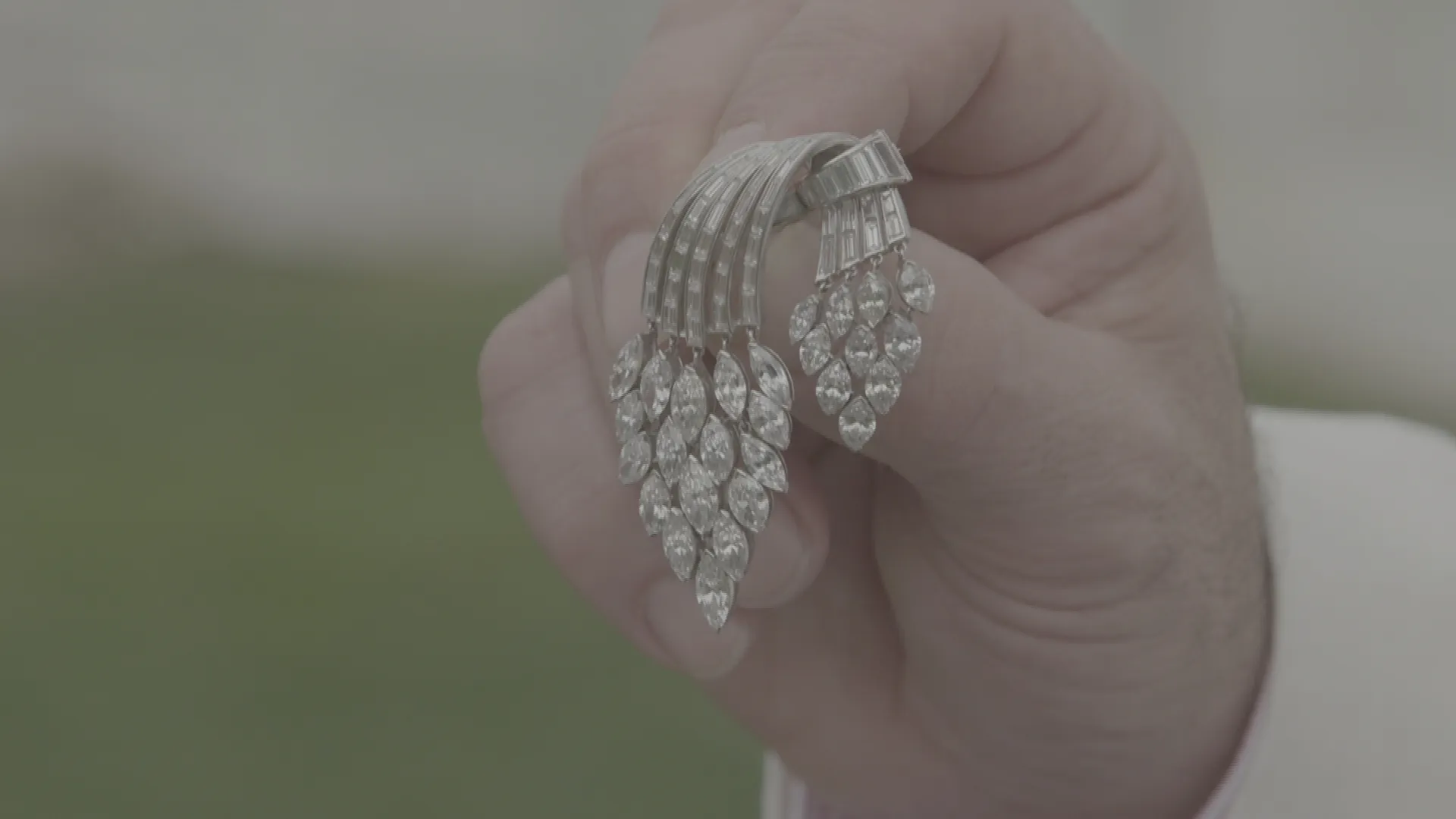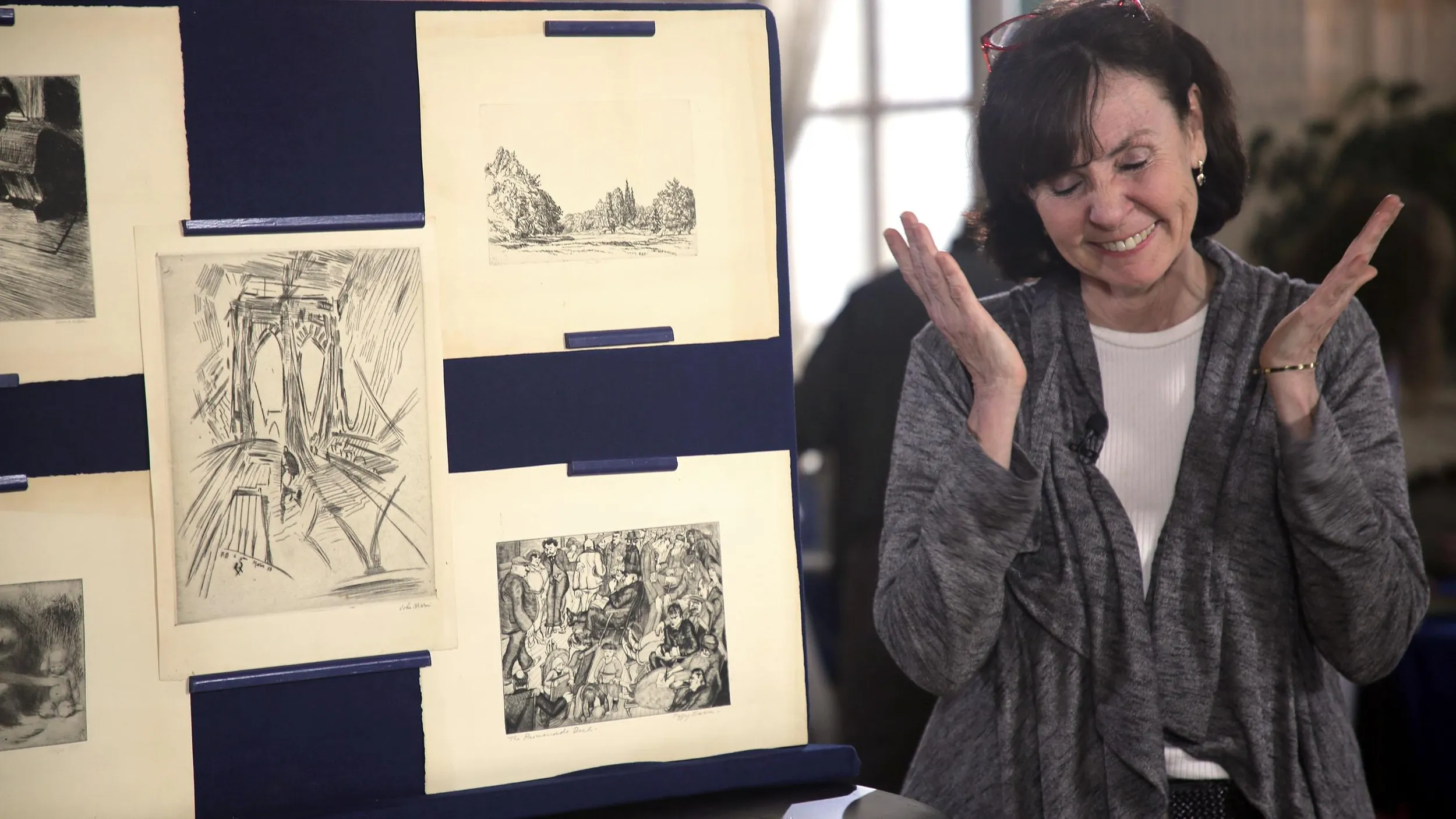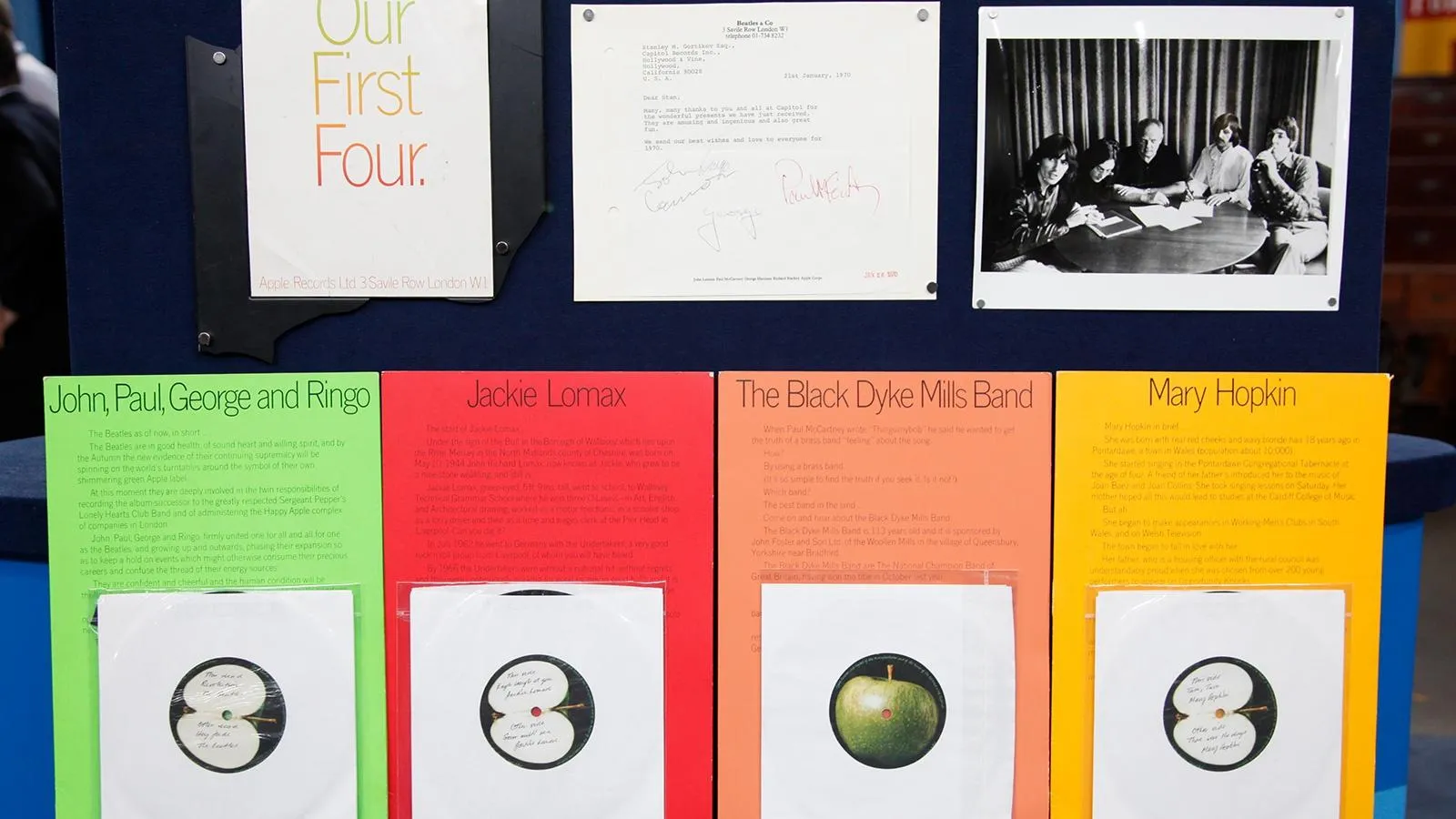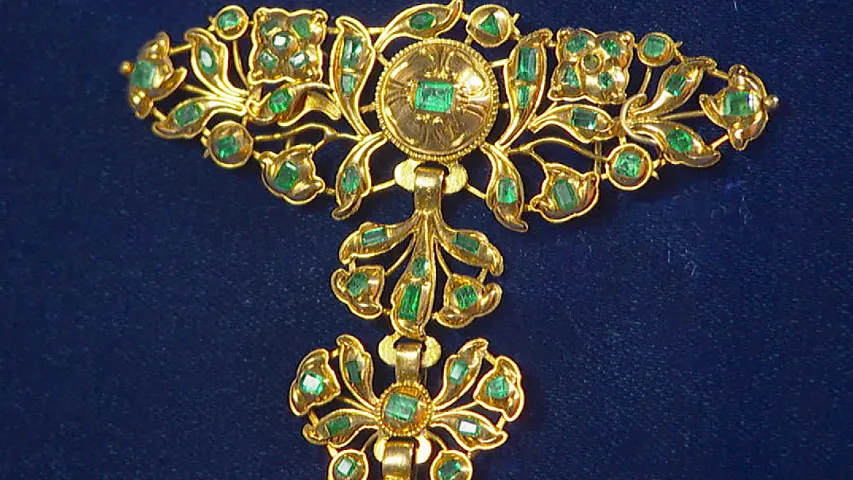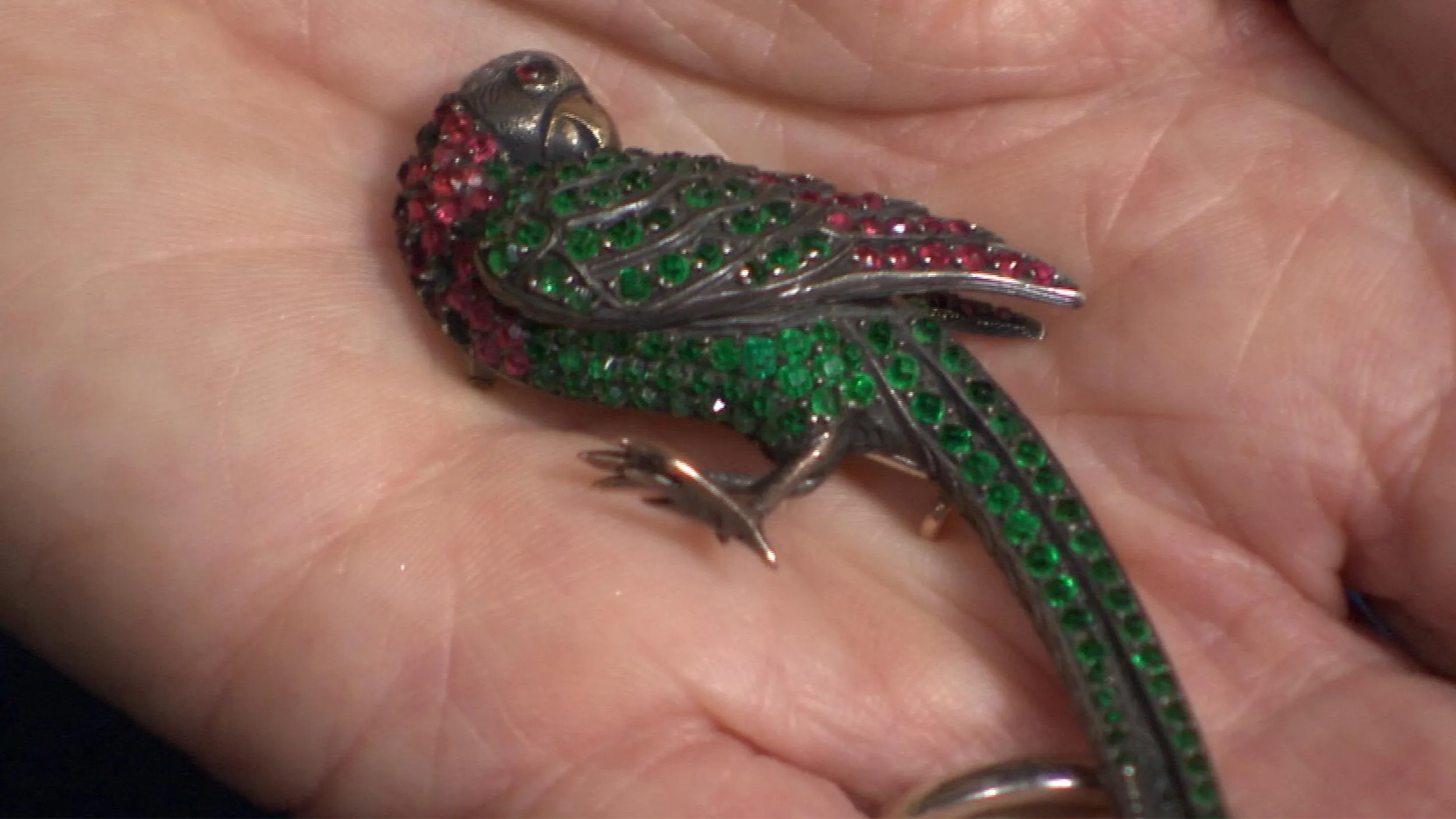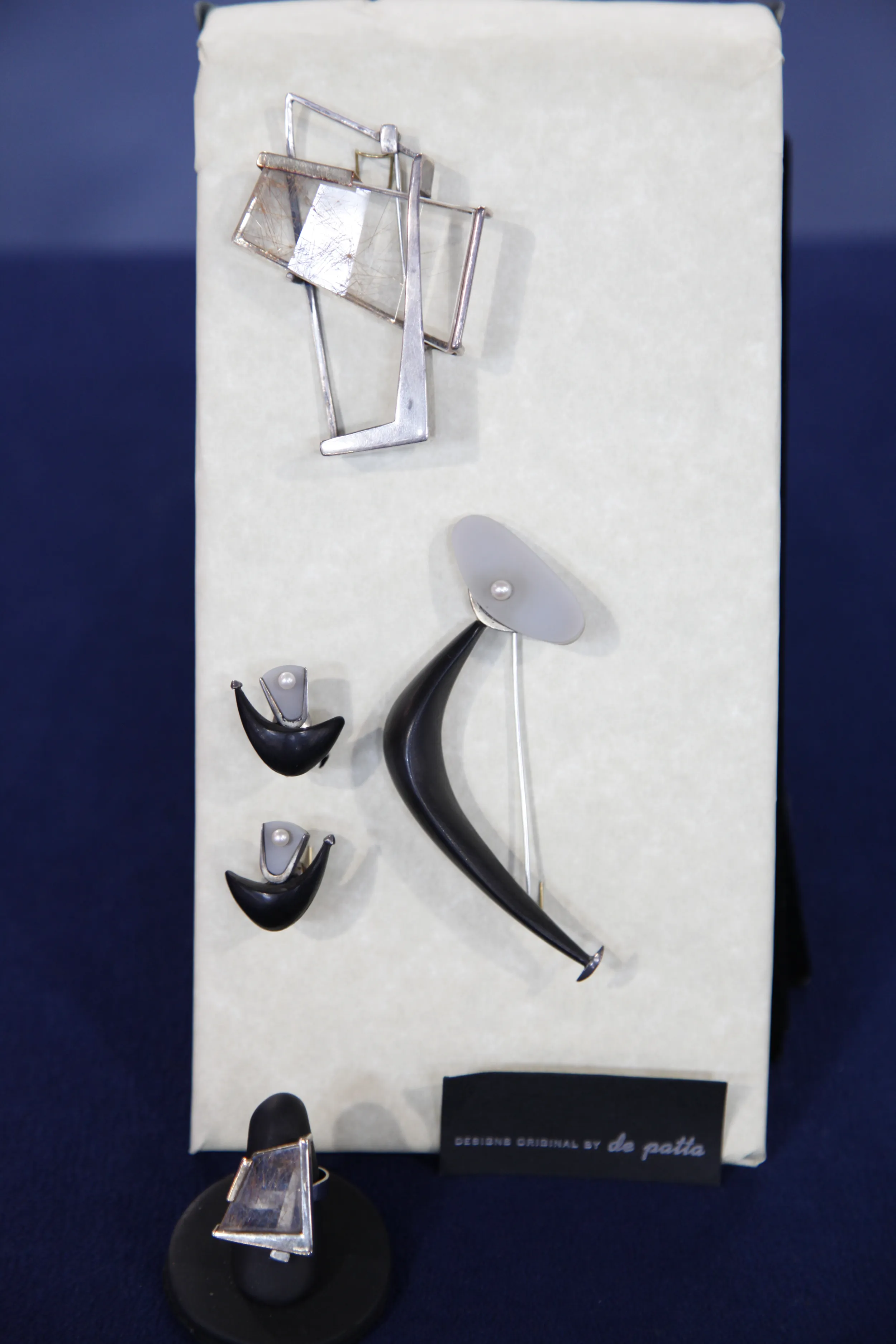GUEST: The pin belonged to my grandmother, who lived in Chicago. I don't know where she bought it. I don't know what it's worth. I haven't worn it, and that's, that's all I can tell you, really.
APPRAISER: And never had it appraised, did you?
GUEST: Never had it appraised.
APPRAISER: We love people like you when you come in here with that. (chuckles) Lack of information.
GUEST: Lack of information, solid lack.
APPRAISER: Right. (laughs) All right, so, first of all, you see, I'm just standing here, and it's moving.
GUEST: In the wind.
APPRAISER: Yeah. Is that fantastic?
GUEST: It is lovely.
APPRAISER: Imagine if you were dancing in, in 1940, because that's about when I think this pin was made.
GUEST: Okay.
APPRAISER: All right? Now, we keep referring to it as a pin.
GUEST: But?
APPRAISER: I don't-- I think the pin was added. I think it was always made to have some type of a chain running through it, and it hung as a necklace. Not that it doesn't work as a pin.
GUEST: Okay.
APPRAISER: It reminds me of a waterfall. I mean, the diamonds are truly dripping off of this, okay?
GUEST: (chuckles)
APPRAISER: There's a little over two ounces of platinum in the whole piece. All right? Then there's about four carats in baguettes. The marquise-shaped stones, there's a lot of them, and they're all different sizes. One of them is as large as a carat. You add them all up, there's nine carats in the marquise diamonds. So all together, we got 13 carats of goods, all right? Any thoughts on the piece?
GUEST: Beautiful.
APPRAISER: Beautiful, I like that. So you really don't need to know what it's worth.
GUEST: I would like to know. (laughs)
APPRAISER: Thought I'd get out of here. So I would say at auction, $15,000 to $20,000.
GUEST: Great.
APPRAISER: Not bad, right?
GUEST: Not bad.
APPRAISER: Yeah.
GUEST: For a bunch of rocks. (both laugh)
APPRAISER: That's great, I love it.

